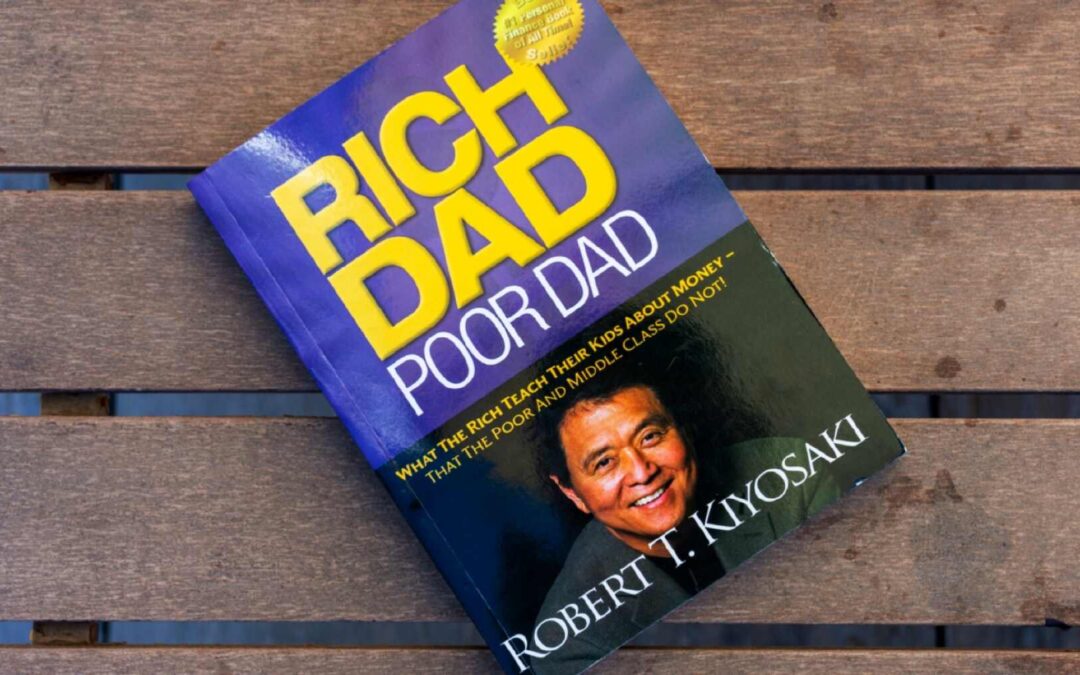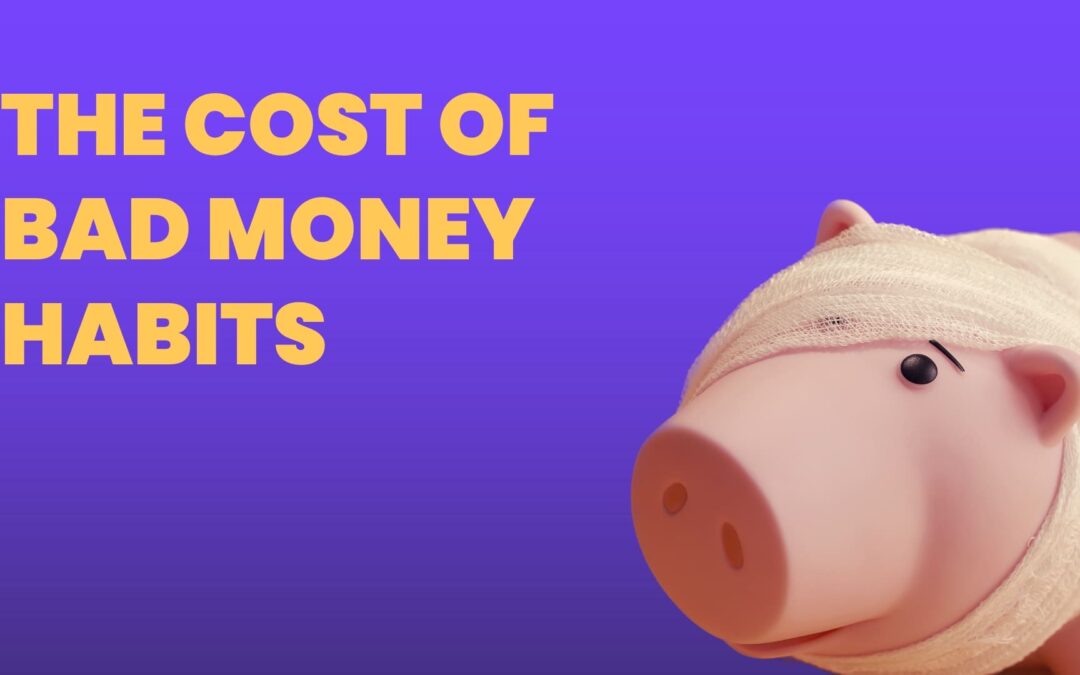
by Sathvik Nagraj | Apr 6, 2023 | Savings
Are you trying to manage your spending and saving better? With so many personal finance apps available in India, it can be hard to know which is best for you.
In this article, we’ll explore the features of some of the most popular personal expense tracker apps in India.
We’ll discuss how to choose the right app for your needs and by the end, you will have a clearer idea of which one is best suited for managing your finances.
Also explore our article on the importance of personal finance management and creating a budget.
The Best Apps to Manage your Money
Here are the best personal finance apps that you can use easily.
Money View:
- The Money View app is the perfect personal finance companion for those living in India. It offers quick budgeting tools, expense tracking and savings goals to help you take control of your finances.
- It also provides a comprehensive view of all your bank accounts and credit cards in one place.
- The app can be linked with over 3000 banks in India and supports 15 languages, making it the perfect choice for anyone looking to manage their money better.
Mint:
- Mint is a great personal finance app and one of the most popular ones in India. It provides budgeting tools, investment tracking, debt management and more to help you manage your spending and saving.
- The app also allows users to set goals for savings and investments which helps them stay on track with their finances.
- Mint also offers the ability to sync with over 21,000 banks, credit cards and other financial institutions.
Walnut:
- Walnut is an all-in-one personal finance app designed for Indians. It helps users keep track of their expenses and investments in a simple yet comprehensive manner.
- The app also provides real-time notifications on your spending and saving so you can stay in control of your finances.
- It also offers budgeting tools and investment tracking features to help you make the most of your money.
YNAB (You Need a Budget):
- YNAB is an excellent personal finance app that helps users set budgets, track expenses and save money.
- It allows users to create goals and stick with them by tracking their progress in real-time.
- The app also offers debt management, investment tracking and more to help users take control of their finances.
Spendee:
- Spendee is a personal finance app designed for Indians who want to manage their money better.
- It provides budgeting tools, expense tracking and saving goals that make it easier for users to take control of their finances.
- The app also allows users to sync with over 2000 banks and financial institutions, making it a great choice for those looking to manage their money better.
Personal Capital:
- Personal Capital is a personal finance management tool that helps users track their expenses, investments and savings in one place.
- It offers budgeting tools, portfolio tracking and debt management to help users take control of their finances.
- The app also syncs with over 2000 banks in India, making it a great choice for anyone looking to get the most out of their money.
InzmoMoney:
- Inzmo is a comprehensive financial assistant designed specifically for Indian users.
- It provides budgeting tools, expense tracking, savings goals and investment tracking to help users manage their money better.
- The app also allows users to link up with over 3500 banks in India, making it ideal for those looking for a personal finance app that’s tailored for the Indian market.
Conclusion
From Money View to InzmoMoney, there are a variety of personal finance apps available in India that can help you manage your money better. Depending on what features you’re looking for, any one of these apps could be the perfect fit for your needs.
Whether it’s budgeting tools or investment tracking and debt management, each app offers something unique that may make it the right choice for you.
Be sure to review all of the pros and cons we’ve listed before making a decision so that you pick an app best suited to helping you achieve financial success.

by Sathvik Nagraj | Apr 4, 2023 | Culture & Money
Robert Kiyosaki’s “Rich Dad Poor Dad” is one of the most important financial books in history. In this blog post, we will provide you with a brief summary of Rich Dad Poor Dad along with its main points
As mentioned above, Rich Dad Poor Dad is one of the most influential books on personal finance and financial literacy ever written. In it, he shares his story of growing up with two very different fathers: his real father, who was a salaried employee all his life and never achieved financial security; and his rich dad, an entrepreneur who taught him about money and investing.
Through their stories and experiences, Robert outlines how to master your finances in order to achieve true wealth. He explains why financial literacy is essential for success in today’s world. He explains us how to create passive income streams through investments such as stocks or real estate.
With practical advice that can be applied in any situation, Rich Dad Poor Dad has changed the way people think about money and investing around the world.
Read on for a summary of Rich Dad Poor Dad!
The Summary Of Rich Dad Poor Dad
Rich Dad Poor Dad is a book written by Robert Kiyosaki that explores the importance of financial literacy. It focuses on how to create wealth. It is based on Kiyosaki’s own experiences growing up with two very different fathers.
In the book, Kiyosaki outlines how to master your finances in order to achieve true wealth. He explains why financial literacy is essential for success in today’s world. He also provides advice on how to create passive income streams through investments such as stocks or real estate.
Understanding Money
Financial literacy is essential for success in today’s world. The book emphasizes the importance of understanding how money works and how to properly manage it.
Kiyosaki also encourages readers to build a financial foundation by cultivating an investor’s mindset and learning how to identify opportunities for creating wealth.
Creating Multiple Streams of Income
Creating passive income streams is essential for achieving financial freedom. Kiyosaki explains that the key to wealth is building multiple income streams, such as through investments in stocks or real estate.
He also encourages readers to focus on creating assets that generate more value over time, rather than relying solely on a salary from a job.
Managing Money
The lessons in the book can be applied to real life situations. Kiyosaki explains how his rich dad taught him practical ways to manage money, such as budgeting, saving, and investing.
He also provides advice on how to start a business or side hustle in order to generate additional income and build long-term wealth.
Application in Real Life
Robert Kiyosaki’s book “Rich Dad Poor Dad” teaches us about money and how to be successful. Here are some of the things it tells us:
- It is important to know about money and how it works.
- We should think like investors and look for opportunities to make money.
- Building multiple income streams helps us become financially independent.
- We should practise budgeting, saving, and investing our money wisely.
- Starting a business or side hustle can help generate extra income in the long run!
Conclusion
Rich Dad Poor Dad is an important book for anyone looking to learn more about personal finance and financial literacy. It provides practical advice that can be applied in any situation. From budgeting and saving money to understanding the power of investing in stocks or real estate, the summary of rich dad poor dad is very necessary for financial health.
Robert Kiyosaki’s message of cultivating an investor’s mindset, building multiple income streams, and managing money wisely will help readers take control of their finances and achieve true wealth.
If you are ready to make a change in your life by mastering your finances, the summary of Rich Dad Poor Dad is the perfect guide!

by Sathvik Nagraj | Mar 23, 2023 | Investment
Living on a tight budget can be difficult, especially when you have a low income. It is especially hard to save money with low income. Saving money is one of the most important components of personal finance. With the right strategies and techniques, it is possible to save money and still enjoy life. In this article, we will provide seven essential tips to help you save money while living on a low income.
We’ll show you how to track your spending and create a budget that works for your lifestyle and a lot more. With these tips in mind, you can start making smart financial decisions today!
Often, a few bad financial habits may prove to be a blockage to your saving journey. Find out how to break free from these bad habits here.
How to Save Money Fast with a Low Income?
Here are the top ways to save money with a low income:
Track your spending –
Create a budget and stick to it by monitoring how much you earn each month, then allocating specific amounts for different expenses such as housing, groceries, transportation, and utilities.
You can also save money by cutting out unnecessary expenses and setting aside some of your income for savings.
Take Advantage of Public Services
Take advantage of free services such as libraries, parks, and clubs.
These places often offer various activities that don’t cost anything, and they can help you save money with a low income.
Use your Coupons
Save on groceries by using coupons, buying in bulk when possible, and planning meals ahead of time.
You can save money by meal prepping for the week and taking advantage of grocery store sales and discounts.
Cut Down your Energy Costs
Cut down on energy costs by unplugging electronics when not in use or switching to LED bulbs. This can save you a lot of money on your electricity bill each month!
Save Money Wherever Possible
Look for ways to save money on transportation costs like carpooling or taking public transportation whenever possible.
Taking the bus or train can save you a lot of money in gas and vehicle maintenance.
Use your Credits
Make use of tax credits available for low-income households.
These credits can help you save money on taxes, as well as give you access to additional benefits such as health care and child care.
Get a Side Hustle
Consider getting a side job or selling items you no longer need online for extra income.
This can help supplement your regular income and save money in the long run.
Conclusion
Saving money with a low income can be difficult, but it’s not impossible. By following our seven essential tips outlined in this article, you should be able to save more of your hard-earned money each month and still live well on less.
Start tracking your spending today, take advantage of free services when possible, save on groceries by using coupons and buying in bulk, cut down energy costs by unplugging electronics or switching to LED bulbs, look for ways to save money on transportation costs such as carpooling or taking public transport whenever possible, make use of tax credits available for low-income households and consider getting a side job or selling items online for extra income.
With these strategies in mind you too can save with a low income!

by Sathvik Nagraj | Mar 23, 2023 | Savings
Bad money habits can have a significant impact on your financial wellbeing. Whether it’s impulse purchases, living beyond your means or not taking the time to understand investments, these bad spending habits can lead to debt and other financial difficulties. But with some effort and dedication, you can break free from these behaviors and take control of your finances.
In this article we’ll look at how to recognize common bad money habits and provide expert tips for turning things around.
With our help, you’ll be able to make better decisions about spending, saving and investing in order to secure your financial future and break free from the bad money habits.
Also check out our article on how to save money with a low income here!
6 Bad Financial Habits to Quit Now!
To establish the importance of personal finance management, here are 6 poor spending habits to let go immediately:
Impulse Purchases
Impulse purchases can add up quickly and put a serious dent in your budget. Many people find it hard to resist the urge to buy something that ‘looks nice’, or simply because it’s on sale.
Taking the time to consider if you actually need the item before you purchase it can save you money in the long run.
Poor Spending Habits
Poor spending habits can take many forms, from shopping for non-essential items to using credit cards for everyday expenses.
A good way to tackle this habit is to create a budget and track your spending against it every month. That way you’ll be able to identify any unnecessary purchases and make changes to your spending habits.
Not Saving Enough
Many people simply don’t save enough for their future, leaving themselves at risk of financial insecurity when unexpected costs arise or during retirement.
Setting up a regular deposit into a savings account can help you build up your rainy-day fund over time so that you’re always prepared.
Investing Without Research
This is one of the top bad money habits that most people make. Before you invest your money, it’s important to do your research and understand the various types of investments available.
A little bit of time spent understanding different investment options can save you a lot of money in the long run and in becoming a successful investor.
Not Establishing Credit
Establishing credit is an important part of growing your financial security, but many people don’t take the time to do it.
By getting a credit card or loan and paying it off on time, you can build up your credit score and become more attractive to lenders in the future.
Not Setting Financial Goals
Setting financial goals is one of the most important components of personal finance.
Without any goals to work towards, it can be hard to make progress on your financial security.
Set some short-term, mid-term and long-term financial goals to keep yourself on track and motivated.
Conclusion
Bad money habits can have a serious impact on your financial wellbeing, but with the right strategies and dedication, you can break free from these behaviors and take control of your finances.
By recognizing common bad money habits such as impulse purchases or poor spending habits, understanding different investment options before investing your money and setting financial goals for yourself, you’ll be able to make better decisions about spending, saving and investing in order to secure your financial future.
With some effort and commitment on our part we are sure that anyone can turn their bad money habit into beneficial ones.

by Sathvik Nagraj | Mar 21, 2023 | Digital Gold
The debate of Gold Vs Platinum is something that has been brewing for decades together.
The timeless beauty of gold and the durability of platinum have made these two precious metals some of the most sought after investments for centuries. But what are their differences? Why is platinum sometimes better than gold, yet considered more cheaper?
This article will explore why platinum is often chosen over gold and examine the properties of each metal to help you make an informed decision when buying or selling either one.
Also check out our article on the amount of gold in India and the factors which make up for calculating the value of a gold ring in India.
Properties: Gold Vs Platinum
Here are some properties which define the two precious metals.
Platinum
- Platinum is one of the rarest elements on earth.
- It is a dense, malleable and ductile metal.
- It has an atomic number of 78 and its melting point is 1772°C (3250°F).
- Platinum is resistant to corrosion and oxidation, making it perfect for platinum jewellery, which won’t tarnish or fade over time.
Gold
- Gold is a soft and malleable metal with an atomic number of 79.
- It has a melting point of 1063°C (1943°F).
- Gold does not corrode and is very resistant to oxidation, making it perfect for jewellery that will last a long time.
Why is Platinum considered more Valuable than Gold Sometimes?
- Platinum is rarer than gold, making it more valuable. The platinum found on Earth is about 30 times rarer than gold and can only be mined from a few countries. This scarcity contributes to platinum’s higher price tag.
- Platinum is more durable than gold, which makes it a better choice for certain applications.
- Platinum is a harder metal than gold. Hence, it doesn’t scratch or dent easily and is more resistant to fading and tarnishing.
- Gold is cheaper than platinum because its price is determined by several factors. They include the availability of mined gold in different countries, changes in supply and demand, government regulations and inflation.
- Despite being more expensive, platinum can be a better choice for certain applications because of its superior strength and durability.
- Platinum is used in many industrial applications such as jewellery, electronics and as a catalytic converter in vehicle engines due to its ability to withstand extreme temperatures without breaking down or corroding.
Tips on Buying or Selling Gold Or Platinum
Transactions with both these valuable metals will involve some element of risk. Hence, it is important to consider the following points while buying or selling platinum or gold.
Research the market
Before buying or selling platinum or gold, it is important to research the current market and understand the global demand for each metal. This will help you determine if platinum or gold is a better investment at this time.
Consider purity
When purchasing platinum or gold, make sure to check the purity of the metal. Purity ratings can range from 10k (41.7%) to 24k (99.9%), with platinum typically being 90-95% pure and gold 75-90%.
Look for certification
It is important to look for a certification stamp on platinum and gold products to ensure the authenticity of the metal.
Compare prices
Compare platinum and gold prices to find the best deal when buying or selling either metal.
Consider taxes
When trading platinum or gold, make sure you know any applicable taxes that may apply in your area so you can factor them into your purchase or sale price.
Conclusion
To conclude the debate of gold vs platinum, both are beautiful metals with distinct qualities. While platinum is rarer than gold and more durable, it can sometimes be cheaper due to different factors in the market.
Whether you’re buying or selling either metal, make sure to research current prices, consider purity ratings and look for certification stamps before making a purchase or sale.
By understanding these differences between gold vs platinum, and taking the necessary steps outlined above when investing in either one of them, you will have all the information needed to make an informed decision that suits your needs best.





